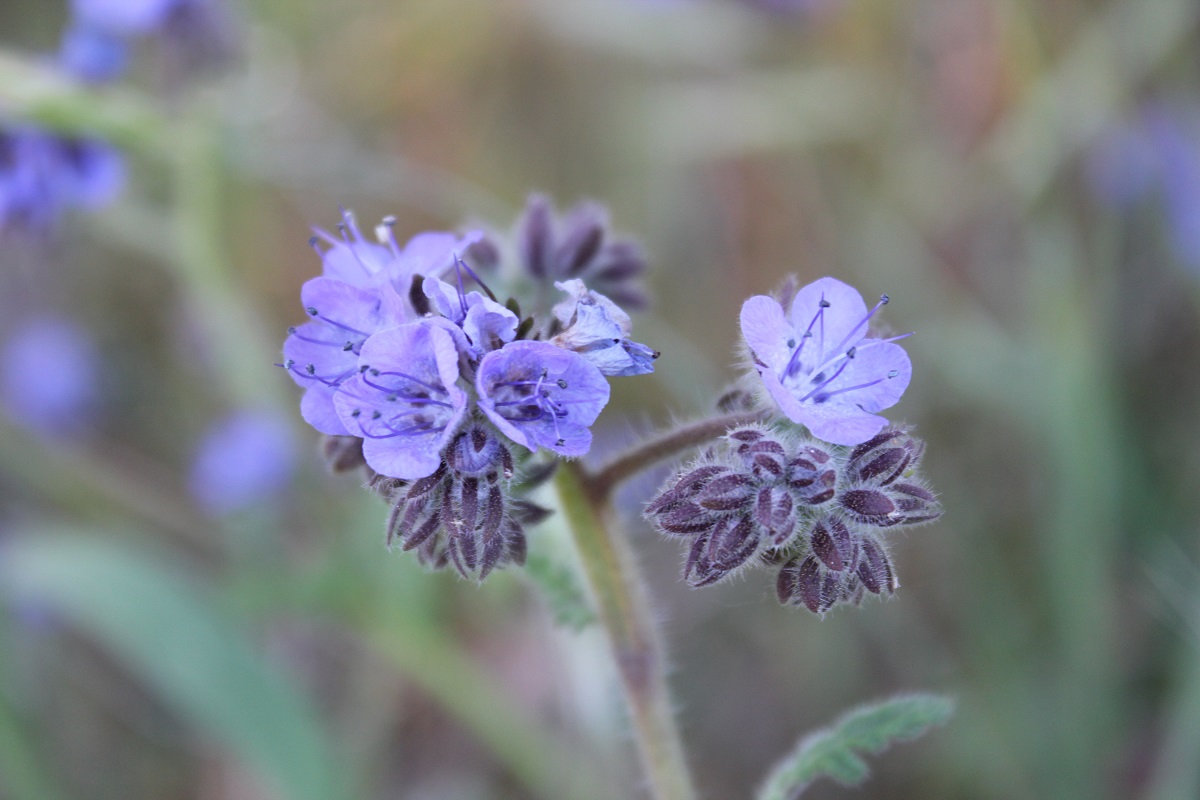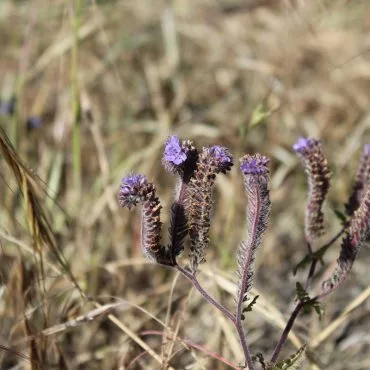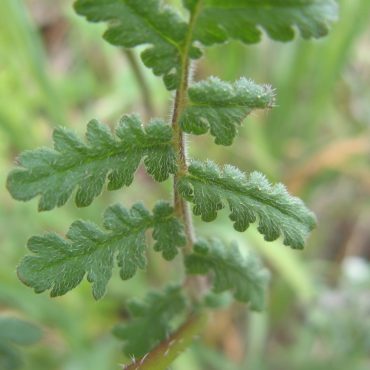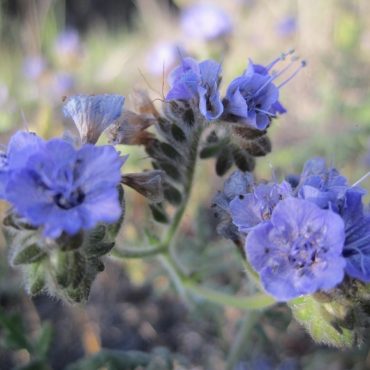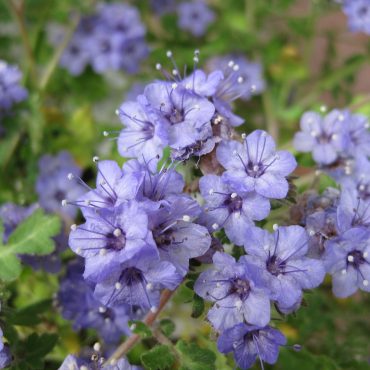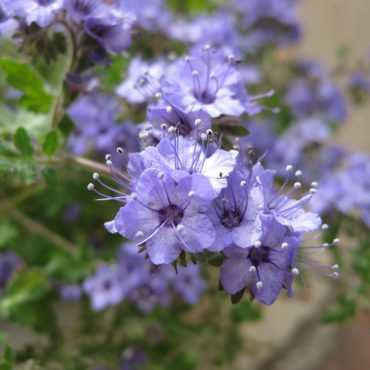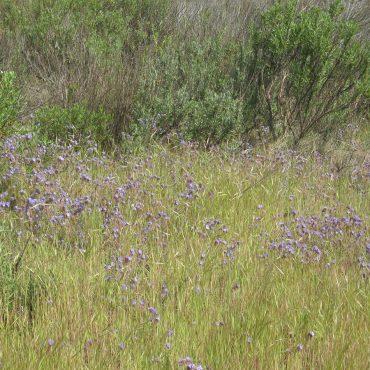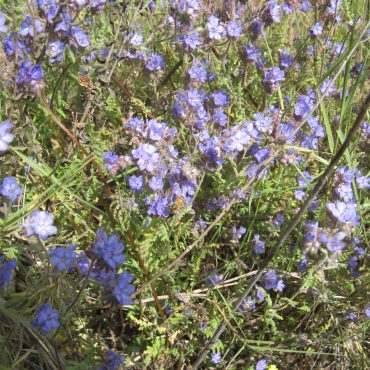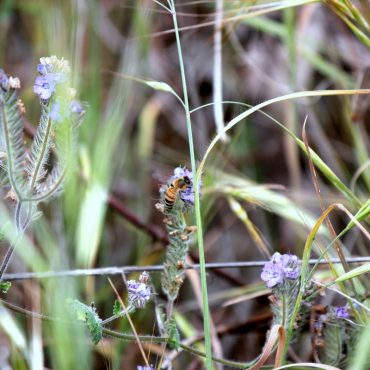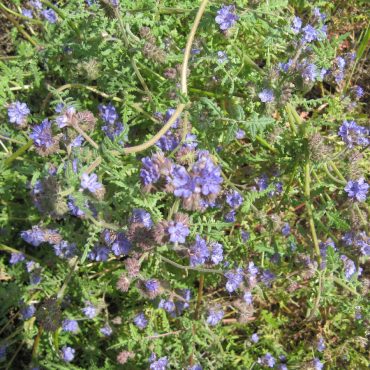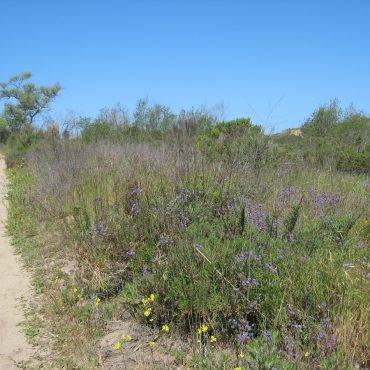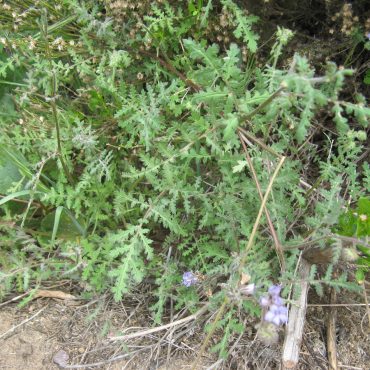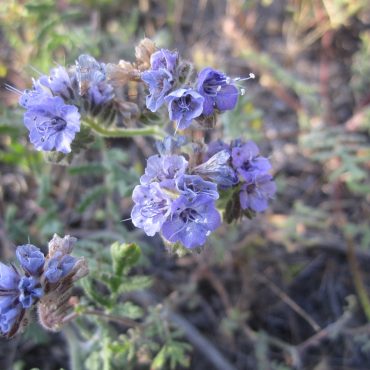Common phacelia (Phacelia distans) is an annual herb that blooms in the spring. It is also known by the common names blue phacelia and wild scorpionweed, since the clusters of flowers are composed of pale lavender to violet-blue individual flowers arranged in a coil that resembles a curled scorpion’s tail.
Common phacelia is native to southwestern US and northern Mexico, and can be found in many plant communities. In San Elijo Lagoon Ecological Reserve it is found in open or disturbed areas along the trails.

